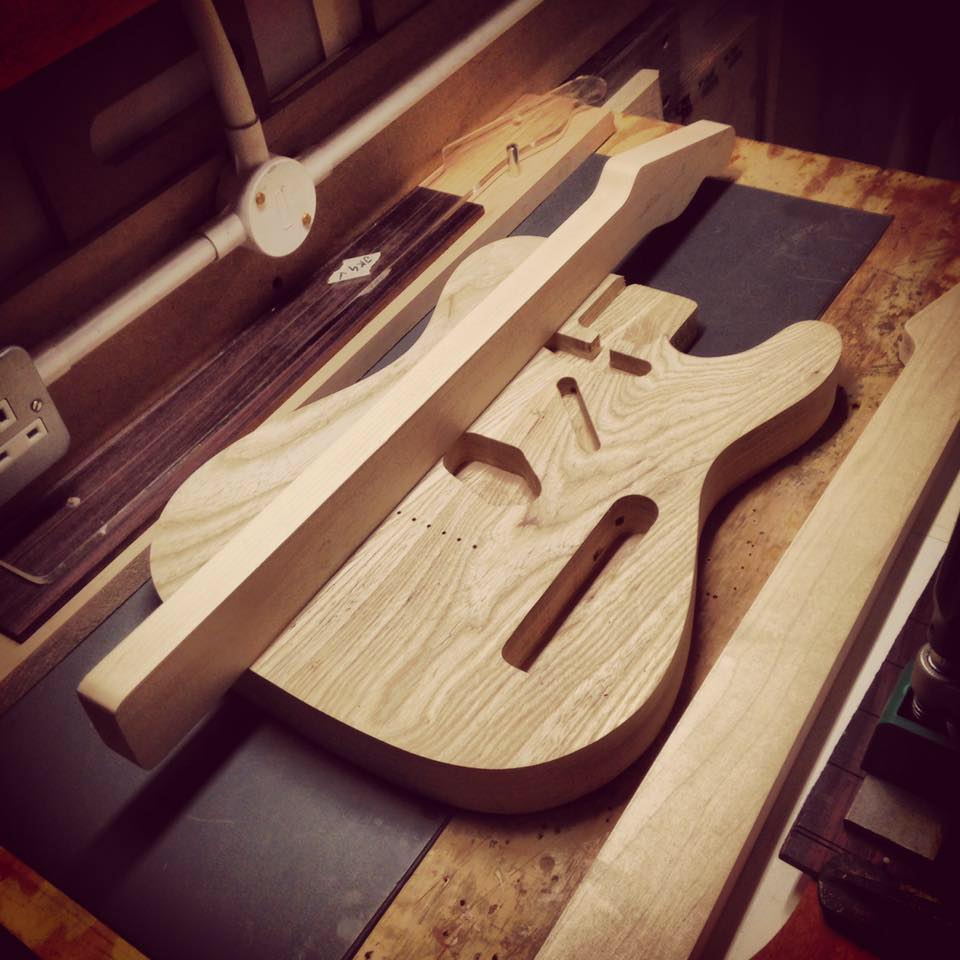Sonic Monkey Pickups
All of our pickups are hand wound in-house and we source the exact enamel wire used by Fender and Gibson in the golden era during the late 50s and early 60s. The bobbins and the magnets are the same to ensure they sound identical to the originals.
Nitro-
Cellulose
Lacquer
Nitrocellulose lacquer is an indication of a good sounding guitar. It allows the wood to vibrate and therefore, sound better. The process takes weeks to apply, as opposed to modern polyurethane lacquers that were developed in the late 60s. Poly-based lacquers, however, compress the wood and constrict the acoustic value of some of the best tone woods.

Hand
Carved
We cut the body blocks of tone wood and (when we can find it) vintage pine into rough outlines before using steel templates identical to the original pre-CBS guitars used by Fender. These are then hand contoured with a rasp, blade, file and sandpaper.
Hide
Glue
Synthetic modern glues that are often used to make modern guitars have their drawbacks: they produce a vibration barrier between the wood surfaces. The guitars of the 50s and mid-60s were bound with hide glue. This natural glue that will soak into pieces of wood and as the water dries, binds them together. This allows all the wood elements of a guitar to talk to one another without any vibration loss.

Reclaimed
Antique
Wood
We use a large variety of different woods including alder, Douglas fir, Scots pine and southern swamp ash. Recently, we have found a lot of Victorian pine in skips locally in East London, providing us with access to the exact same wood used in Fender's prototypes in 1950. Not all pine is ideal for guitar-making, and Victorian pine comes of age at around 100 years old when the structure becoming more crystalline and more acoustic.












